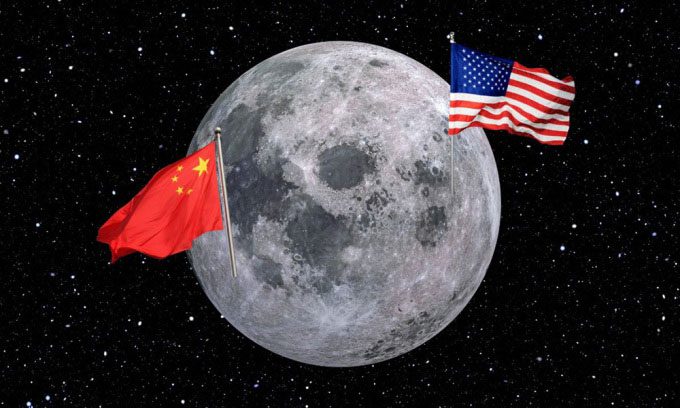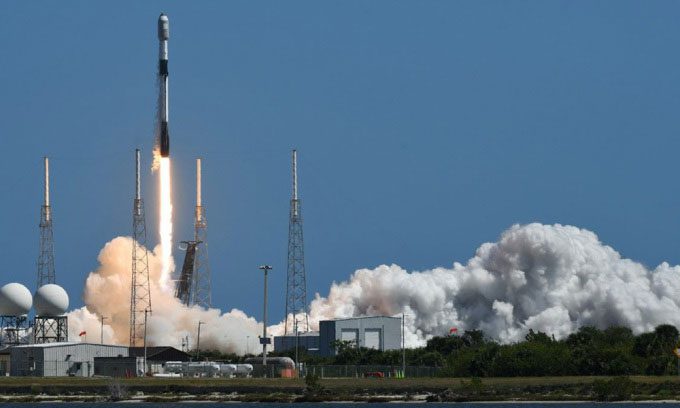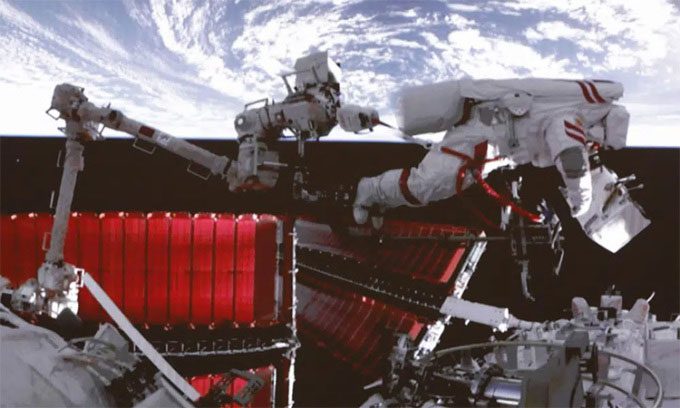In several important areas, the United States not only surpasses China but also outperforms all other countries combined in the field of space.
U.S. Dominance

China and the U.S. both aim to send humans to the Moon. (Photo: Euronews)
In terms of budget, in 2021, the U.S. space budget was approximately $59.8 billion. China has heavily invested in space technology and rockets over the past decade, doubling its spending in the last five years. However, its estimated space budget for 2021 was only $16.18 billion, less than one-third of the U.S. budget, according to Svetla Ben-Itzhak, an associate professor of Space and International Relations at Air University (AU) in the U.S.
The U.S. also far outstrips China in the number of operational satellites. As of April 2023, a total of 5,465 satellites were operational in orbit around the Earth. The U.S. operates 3,433 satellites, accounting for approximately 63% and leading the world. In contrast, China has only 541 satellites.
The U.S. has more spaceports than China. With 7 operational launch sites both domestically and internationally and at least 13 spaceports in development, the U.S. has more options for launching goods into various orbits. China has only 4 operational spaceports and two others planned, all located within its territory.

SpaceX rockets carry hundreds of private satellites into orbit each year from the 7 operational spaceports in the U.S. (Photo: SOPA Images/LightRocket).
A major difference between the U.S. and China is the number of international collaborations. For decades, NASA has developed commercial and international partnerships across many areas, from space technology development to human spaceflight. The U.S. government has signed 169 space data-sharing agreements with 33 states and intergovernmental organizations, 129 agreements with commercial partners, and 7 agreements with academic organizations.
China also has supportive partners in the space sector, notably Russia and members of the Asia-Pacific Space Cooperation Organization, including Iran, Pakistan, Thailand, and Turkey. However, overall, China’s number of partners is fewer and has less space capability, according to Ben-Itzhak.
The Moon race clearly illustrates the differences between the U.S. and China in terms of international cooperation. Both countries plan to send humans to the Moon’s surface and establish bases there in the near future.
In 2019, Russia and China agreed to collaborate on lunar missions by 2028. Russia will contribute the Luna lander and crewed Oryol spacecraft, while China will enhance its Chang’e spacecraft. The International Lunar Research Station of the two countries is open to all interested parties and international partners. However, to date, no other countries have joined.
Meanwhile, since 2020, 24 countries have joined the Artemis Accords, led by the U.S. This international agreement outlines common cooperation principles for future space activities. The Artemis Program aims to return humans to the Moon by 2025, subsequently establishing a lunar space station and base. Additionally, the Artemis Program has contracted with several private companies to develop various technologies, from lunar landers to off-Earth construction methods.

Chinese astronaut Fei Junlong conducts space activities on the Tiangong space station on February 9, 2023. (Photo: Liu Fang/Xinhua/AP)
Impressive Achievements of China
Although the U.S. clearly dominates in many areas of space, China still has noteworthy numbers.
In 2021, China conducted 55 launches into orbit, 4 more than the U.S. However, despite the similar total number of launches, the payloads carried by the rockets differ significantly. 84% of China’s launches carried government or military payloads, primarily for electronic intelligence and optical imaging. In contrast, 61% of U.S. launches were for non-military, academic, or commercial purposes, mainly aimed at Earth observation or telecommunications.
The space station is another achievement of China. The first module of the Tiangong space station was launched into orbit in 2021. The T-shaped structure of the station, consisting of 3 main modules, was completed by the end of 2022. China has designed and launched all modules of the Tiangong station. It is currently the sole operator of this station but has also shown a willingness to cooperate with other countries.
Since the 1990s, the U.S. has collaborated with 14 countries, including Russia, to operate the International Space Station (ISS). Composed of 16 modules, the ISS is much larger than the Tiangong station. This space station has also achieved many technological breakthroughs after decades of operation. However, the ISS is now quite “aged” and participating countries are planning for its “retirement” around 2030.
China continues to develop its space capabilities. According to a report in August 2022, the Pentagon believes China could surpass the U.S. as early as 2045 if the U.S. does not take action. However, it is unlikely that the U.S. will remain stagnant as it continues to invest further in space.


















































